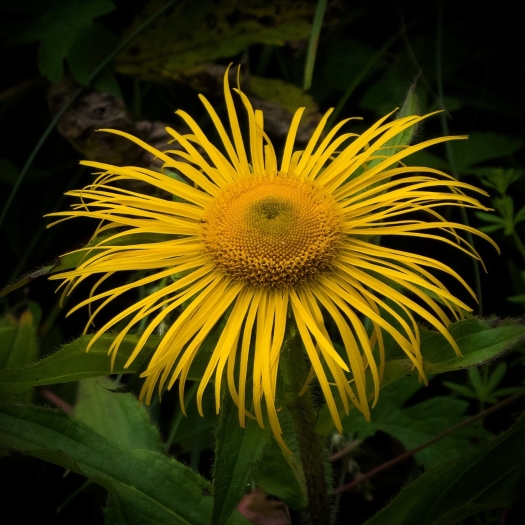Indian Elecampane
(Inula racemosa)
Indian Elecampane (Inula racemosa)
/
/

© Paulmathi Vinod
CC BY 4.0
Image By:
© Paulmathi Vinod
Recorded By:
Copyright:
CC BY 4.0
Copyright Notice:
Photo by: © Paulmathi Vinod | License Type: CC BY 4.0 | License URL: http://creativecommons.org/licenses/by/4.0/ | Uploader: paulmathi | Publisher: iNaturalist |





















Estimated Native Range
Summary
Inula racemosa, commonly known as Indian elecampane, is a perennial herb native to the temperate and alpine regions of the western Himalayas, including areas such as Xinjiang, Afghanistan, Kashmir, Nepal, and Pakistan. It typically grows in meadows, grassy slopes, and along stream banks within its native range. This species can reach up to 5 feet (1.5 meters) in height and is characterized by its robust, upright habit and lance-shaped leaves. The plant produces large, yellow, daisy-like flowers during the summer months, which are highly attractive to pollinators.
Indian elecampane is appreciated for its striking yellow flowers and is used in traditional medicine for its expectorant properties. It is cultivated in herb gardens, borders, and as a part of naturalistic plantings. Inula racemosa prefers full sun to part shade and thrives in well-drained soil with moderate moisture. It is relatively low maintenance but may require staking due to its tall stature. While it is valued for its medicinal uses, gardeners should be cautious as it can potentially spread aggressively in favorable conditions.CC BY-SA 4.0
Indian elecampane is appreciated for its striking yellow flowers and is used in traditional medicine for its expectorant properties. It is cultivated in herb gardens, borders, and as a part of naturalistic plantings. Inula racemosa prefers full sun to part shade and thrives in well-drained soil with moderate moisture. It is relatively low maintenance but may require staking due to its tall stature. While it is valued for its medicinal uses, gardeners should be cautious as it can potentially spread aggressively in favorable conditions.CC BY-SA 4.0
Plant Description
- Plant Type: Herb
- Height: 2-5 feet
- Width: 1.5-2 feet
- Growth Rate: Moderate
- Flower Color: Yellow
- Flowering Season: Summer
- Leaf Retention: Deciduous
Growth Requirements
- Sun: Full Sun, Part Shade
- Water: Medium
- Drainage: Medium, Fast
Common Uses
Bee Garden, Low Maintenance
Natural Habitat
Temperate and alpine meadows, grassy slopes, and stream banks in the western Himalayas
Other Names
Common Names: Pushkarmool, Himalayan Elecampane
Scientific Names: , Inula racemosa, Helenium racemosum, Inula helenium, Inula royleana,
GBIF Accepted Name: